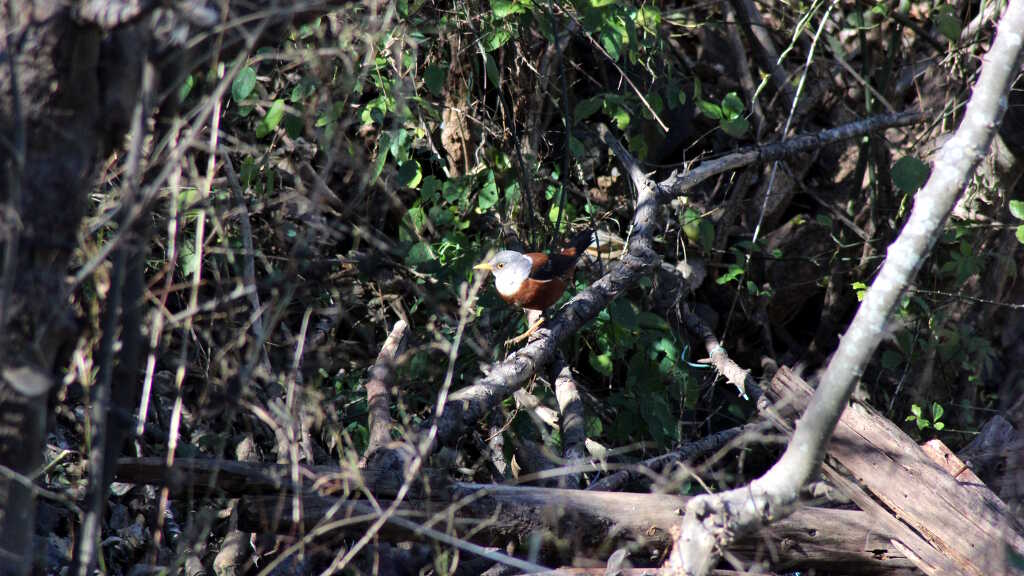
Turdus rubrocanus (Chestnut Thrush)
The Chestnut Thrush (Turdus rubrocanus) is a medium-sized thrush species that is frequently observed in the temperate forests of the Great Himalayan National Park (GHNP). Known for its rich chestnut-brown plumage, especially on its underparts, this shy bird adds both color and melody to the serene landscapes of GHNP.
Appearance and Identification
The Chestnut Thrush is easily identified by its chestnut-colored belly and flanks, complemented by darker brown upperparts and a subtle greyish head. Its song is soft and flute-like, often heard during early mornings and late afternoons. Both male and female birds look similar, although males tend to have slightly glossier feathers.
Habitat and Behavior in GHNP
In GHNP, the Chestnut Thrush is mostly found in high-altitude coniferous and broad-leaved forests. It thrives in moist temperate zones, particularly between elevations of 2,000 to 3,500 meters. This bird forages on the forest floor, often seen flipping through leaf litter in search of insects, worms, and fallen berries.
Although generally solitary or seen in pairs, they may form loose flocks during migration periods. They are more active during dawn and dusk, making them a delight for patient birdwatchers.
| Common name | Chestnut thrush |
| Scientific name | Turdus rubrocanus |
| Family | Muscicapidae |
| Description | It is having a grey head & chestnut upperparts and underparts. Male rubrocanus has pale collar; female has more uniform brownish –grey head/neck. It is resident to Himalayas. In summer it prefers coniferous forest and mixed forest; while in winter it prefers open wooded areas. |
Ecological Importance
The Chestnut Thrush in the Great Himalayan National Park plays an essential ecological role. By feeding on insects and spreading seeds through their droppings, these birds contribute to forest regeneration and pest control. Their presence also serves as an indicator of healthy high-altitude forest ecosystems.
Conservation and Observation
Currently listed as a species of Least Concern by the IUCN, the Chestnut Thrush benefits from the protected environment of GHNP. However, habitat loss in surrounding regions due to deforestation and climate change remains a concern for long-term conservation.
Bird enthusiasts visiting GHNP should carry binoculars and move quietly through forest trails to catch a glimpse of this elusive bird.
Conclusion
The Chestnut Thrush (Turdus rubrocanus) is a vital member of the avian community in the Great Himalayan National Park. Its quiet presence and forest-dwelling habits make it a subtle but important species in the park’s rich biodiversity. Observing it in its natural habitat is a rewarding experience for nature lovers and birdwatchers alike.



